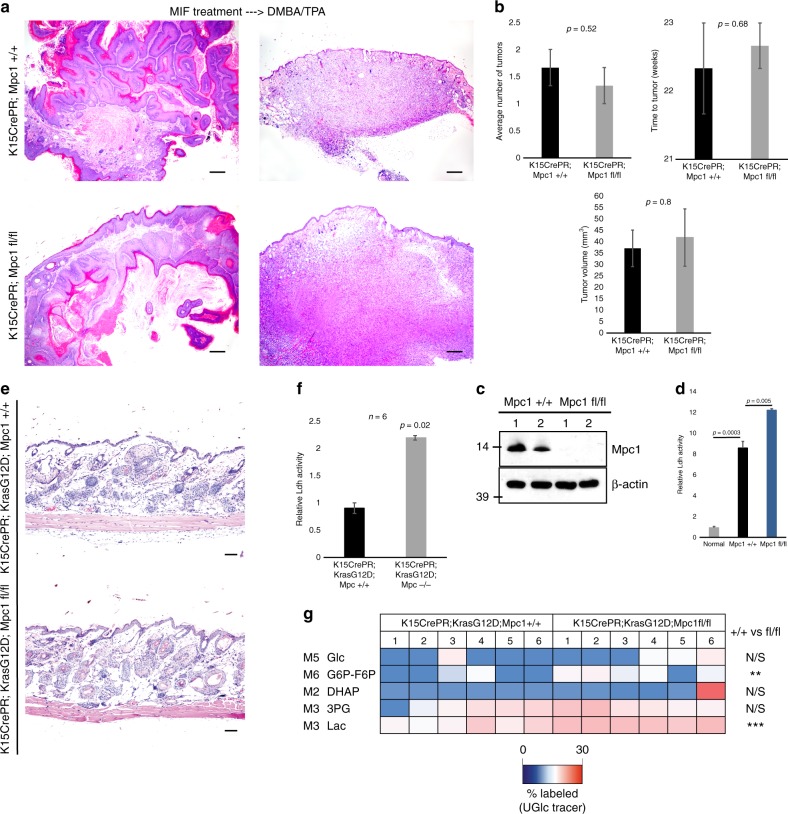Fig. 6.
Induction of Ldh activity by deletion of mitochondrial pyruvate transport does not affect tumor initiation or progression in SCC. a Coupling DMBA/TPA carcinogenesis to transgenic deletion of mitochondrial pyruvate carrier function allowed for an examination of tumorigenesis following stimulation of Ldh activity. Haematoxylin and eosin stain shows similar histology in wild-type and Mpc1-null tumors. Scale bars, 200 µm. b Quantification of time to tumor formation, number of tumors, and tumor volume formed showed that Mpc1 deletion did not affect tumorigenesis. Each bar represents n = 12 mice per genotype. Shown as mean ± SEM. Paired t test was performed, P < 0.05 shown for knockout vs. wild-type tumors. c Western blotting indicated that the genetic deletion of Mpc1 was effective. d Ldh activity on lysate from normal skin and wild-type vs. Mpc1-null tumors. Each bar represents the relative Ldh activity signal for each genotype type where n = 12 mice per genotype. Shown as mean ± SEM. Paired t test was performed, P < 0.05 shown for each tumor genotype vs. control skin. e Mice with just gain of KrasG12D were crossed with floxed-Mpc1 mice to generate one-hit mice with and without Mpc1 expression. Haematoxylin and eosin stain shows similar hyperplasia in wild-type and Mpc1-null tumors. Scale bars, 100 µm. f Ldha activity in lysate generated from wild-type vs. Mpc1-null tumors. Each bar represents the relative Ldh activity signal for each genotype type, where n = 3 mice per genotype. Shown as mean ± SEM. Paired t test was performed, P < 0.05 shown for wild-type vs. knockout hyperplastic skin. g [U-13C6]glucose tracing for glycolytic intermediates shows that while glucose uptake did not change, the production of lactate was increased by loss of Mpc1 in HFSCs. Labeled metabolites were extracted and analyzed by LC–MS from hyperplastic tissue from each genotype. Heatmap depicts percent labeled glycolytic intermediate isotopomers from tissue isolated from six mice per genotype. Student’s paired t test was performed, ∗P < 0.05; ∗∗P < 0.01; ∗∗∗P < 0.001; NS, P > 0.05; n = 12

